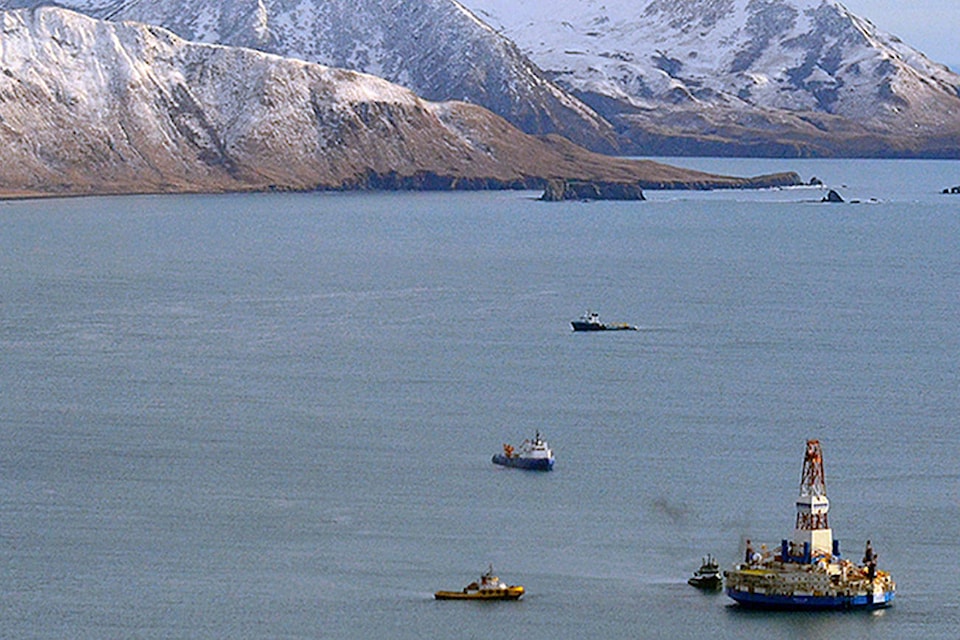As Canada’s five-year moratorium on oil and gas exploration in Arctic waters comes up for review, negotiations are underway to re-open the Beaufort Sea to potential drilling.
During the Inuvik Arctic Development Expo on June 16, GNWT manager of Oil and Gas planning Mike Harlow said the GNWT had strong representation at the table, where is it joined by the Inuvialuit Regional Corporation, Ottawa and the Yukon and he understood the “path was really set towards arriving at a negotiated accord, hopefully, in the near to medium term.”
“The Beaufort Sea has really substantial petroleum reserves,” said Harlow. “Presently those reserves are off-limits due to a moratorium put in place by the federal government in 2016.
“As a result of that moratorium, there are two parallel process that are ongoing which support efforts to re-open the Beaufort Sea.”
Conservative estimates are there are 2.9 billion barrels of oil and 25 trillion cubic feet of natural gas buried in the Beaufort sea.
Harlow said the GNWT was hoping to establish a Beaufort Drilling Accord, which would spell out decision making powers, responsibilities and determining who collects what share of the revenue. It would create a framework to establish drilling platforms, should there be interest in doing so. He added the GNWT’s position was built on the NWT Petroleum Resources strategy, which was passed by the previous legislature.
Noting Ottawa maintains jurisdiction over the Beaufort Sea as part of the 2014 NWT Devolution Agreement, Industry, Tourism and Investment Minister Caroline Wawzonek said the GNWT’s main objective was to bring the decision making back to the Beaufort Delta and the GNWT.
“If the moratorium were to be lifted or changed and there would be some access to reserves in the area, there needs to be a regime in place to ensure that the governments of the regions and their people are making the decisions on whether or what to access and how, and with what benefits,” she said. “We want to see (the moratorium) lifted, but want to see it lifted because we are being respectful of the wishes of the people of the region, in particular the Inuvialuit.”
Both Wawzonek and Harlow noted the decision on whether to continue the moratorium or not was informed by the Beaufort Region Strategic Environmental Assessment, which was released Sept. 11 of last year and was written by Kavik-Stantec, an Inuvialuit company that is a partnership between Kavik-Holdings (Inuvialuit), Michael Fabijan and Stantec. That report states climate change — which is primarily caused by greenhouse gas emissions — will do far more damage to the Beaufort Delta’s ecology and people than any development would, although it concedes an oil spill would also cause irreversible damage. The report also notes that regardless of if drilling occurs in the Beaufort Sea or not the ecosystem would be under pressure from cruise ships, military operations and movement of goods.
It should be noted that offshore oil exploration is handled separately than onshore oil exploration, which does not have a moratorium on it.
Market sands have shifted
Even if the moratorium is lifted, there’s no guarantee Inuvik will see another oil boom. During the COVID-19 pandemic, the price of oil dropped below zero. Production cuts by the Organization of Petroleum Exporting Countries (OPEC) has pushed the price of a barrel of oil back to an average of $70. Harlow noted the last time an oil company was considering an offshore platform near Tuktoyaktuk, the price of oil was in excess of $100.
So far, few efforts to extract oil from the Arctic Ocean have seen success. Most recently, Shell abandoned drilling plans in the Chukchi Sea in 2015 after tests concluded there was not enough crude in their claim to make the expense worthwhile. Norway has recently resumed issuing exploration licences in the Bering Sea, but at the same its trillion-dollar sovereign wealth fund sold off its portfolio of oil and gas companies. Meanwhile, shareholders of ExxonMobil, also known as Esso, recently elected two climate change activists to its board of directors in spite of objections from the CEO.
As getting a safe and working drilling platform build over a confirmed source of oil can take up to a decade, a global shift towards electrification of vehicles may be another factor. The United States has pledged to ban all combustion engines by 2040. Canada, Japan and the European Union have pledged to do the same by 2035. China has also stated it is preparing a timeline to phase out gasoline powered vehicles. This trend, combined with bans on single-use plastic, could put a limit on the demand for crude oil in the future.
Even within the GNWT the situation has changed significantly. After passing updating the Petroleum Act last year, “significant discovery leases” — essentially a hold on a claim until market conditions become favour — now have a maximum lifespan of 15 years, whereas before companies could lay a claim indefinitely. This means any company that wants to extract oil from the Beaufort Sea would have a maximum of 15 years to establish a rig.
Conceding expanding the oil sector may not be compatible with Canada’s pledge to reduce greenhouse gas emissions, Wawzonek said the GNWT’s primary motivation was to give the people of the Beaufort Delta control of their own destiny in regards to drilling instead of having decisions made in Ottawa.
“Our role is to facilitate and ensure that benefits are accruing to the people of the region in a way that matches up to their vision of the region,” she said, adding she hasn’t fielded very many questions of interest from petroleum companies since assuming the ITI portfolio. “That is not an area I’m seeing a lot of activity, to put it bluntly.”
